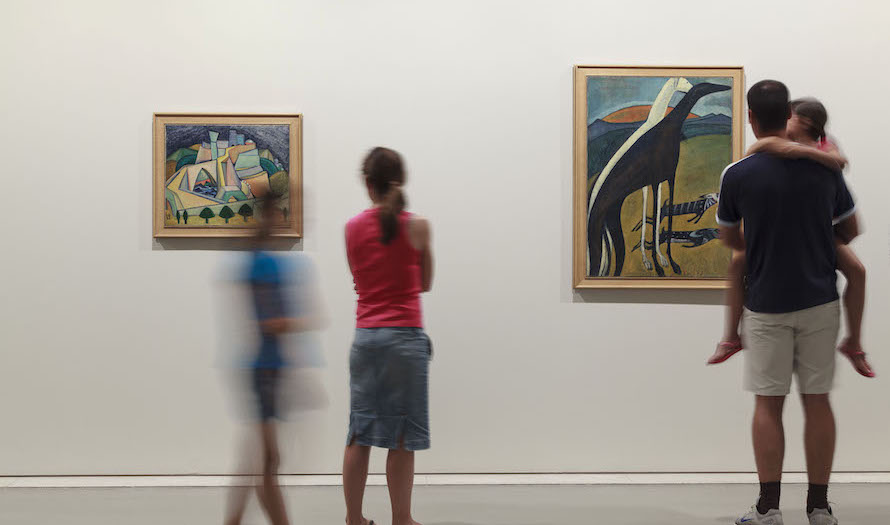Founded 60 years ago, the Fundação Gulbenkian remains one of the strongest and most cherished symbols of culture in Portugal. In the heart of Lisbon, this precious modernist building filled with treasures is the living legacy of Calouste Gulbenkian. Inside, outside, in the exhibition rooms, the concert hall, the art library or the beautiful, minimalist gardens, Gulbenkian is always a reason for surprise and wonder. Gulbenkian is an absolute must-seen in any city break in Lisbon. Once you step in and start to feel its energy and beauty, you’ll understand why.
The new life of the Gulbenkian Foundation
For years, the Fundação Gulbenkian has had two different museological nuclei. On the one hand, visitors would delight in The Founder’s Collection, to discover all the fascinating objects and works of art assembled by Calouste Gulbenkian throughout his life. On the other, they would marvel at the latest creations of contemporary art at the CAM (Modern Art Center). Now, Fundação Gulbenkian has introduced a new format where a visit to the museum includes both nuclei. It’s really like having the best of both worlds, and it offers a more thorough view of Calouste Gulbenkian and the Foundation.
Gulbenkian Foundation: past, present and future
At Gulbenkian, it all started with the Founder’s Collection. This magnificent collection has been described as having “only the best”. It covers various periods and areas: Egyptian, Islamic and Oriental art, old coins and European painting and decorative arts. But this is only one part of Gulbenkian. The Centro de Arte Moderna (Modern Art Centre), opened in 1983, is the second half of this bespoke cultural monument. It was built to house different contemporary activities and today it showcases the modern and contemporary part of the Gulbenkian collection as well as several temporary exhibitions.
Gulbenkian Foundation: so much to discover
Starting in the 1980s, the Fundação Gulbenkian began more systematically to acquire works by modern Portuguese artists. Hence the Modern collection starts towards the end of the 19th century, precisely where the Founder’s collection ends. The collection continues to grow, by purchase and by donation, and comprises more than 10.000 pieces. Besides art, Gulbenkian offers one of the most spectacular modern gardens in Portugal. Designed by landscape architects António Viana Barreto and Gonçalo Ribeiro Telles, the gardens of Gulbenkian are a work of art in their own right. Created in the 1960’s the gardens of Fundação Gulbenkian are among the most emblematical of the modern movement in Portugal. To help visitors understand more deeply the unique features of these gardens, the interpretative center Gonçalo Ribeiro Telles, at Gulbenkian, offer a multimedia experience. A fresh perspective that will fascinate those who know the gardens, and those who are visiting for the first time.





